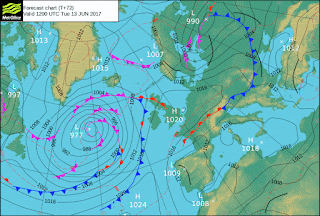An interesting roll of the dice this evening:
https://weather.gc.ca/ensemble/naefs/cartes_e.html
A violent storm set up but it is very changeable over the next run, presumably the chart for the 12th is a series of landlocked swarms. And what could be quite a large earthquake in the North Atlantic, fortunately mitigated by a developing High for Wednesday.
Can you guess what that means yet?
Cluebyfour = t+96, afternoon.
What was the Arctic ice left like following that kerfuffle in April?
Heads up:
5th 04:00. 51.1N. 179.5W. Semisopochnoi Island, Alaska 4.6 mb
7th 16:22. 51.5N. -178.4W.Anaga Volcano, Alaska 4.8 mb
5th 07:51. 52.3N. -170.4W. Yunaska Island, Alaska 4.7 mb
5th 13:43. 52.7N. -174.4W. Atka, Alaska 4.6 mb
5th 02:05. 53.7N. 170.8E. Attu Station, Alaska 4.5 mb
7th 00:27. 56.9N. 162.9E. Ust'-Kamchatsk Staryy, Russia 5.1 mb
7th 09:06. 57.2N. -34.0W. Reykjanes Ridge 5.1 mb
9th 20:49. 79.9N. 0.6E. Greenland Sea 5.2 mb
7th 17:20. 84.6595 104.0155 North of Severnaya Zemlya 4.9 mb
Where the action is for this stuff:
http://ds.iris.edu/seismon/zoom/?view=eveday&lon=14&lat=77
Not exactly proof that storms are rare up there:
April 2017
27th 14:46. 51.2N. 178.6E. 81km S of Little Sitkin Island, Alaska. 5.7mww
March
31th 17:25. 52.7N. -32.3W. Reykjanes Ridge 5.5mww
But...
I think it may be worth keeping an eye on Nullschool or some sort of ocean current predictor:
http://www.bing.com/?pc=EUPP_U156 perhaps?
Or just settle for the news of seiche developers like wot I say. At least the Arctic conditions look a lot calmer than Antarctic ones. any time of the year!
There doesn't appear to be much going on in the North Pacific at the moment:
http://www.bom.gov.au/australia/charts/viewer/index.shtml?type=mslp-precip&tz=UTC&area=G&model=G&chartSubmit=Refresh+View
But the stuff in Siberia seems to be going the wrong way?
Whatever is going on with the counterpoint it all seems to take place by Monday:
http://www.bom.gov.au/australia/charts/viewer/index.shtml?type=mslp-precip&tz=UTC&area=SH&model=G&chartSubmit=Refresh+View
Interesting; no?
And here is the whole kerplonking collection from this evening:
The North Atlantic you have already seen:
But note the cold fronts.
The comparison between the Arctic and the Antarctic is interesting. The North Pole is very calm compared to the southern version.
I presume few will follow the last sets but they are the most interesting. The cause of storms are the "larger than usua"l earthquakes. And almost none occur in the Arctic.
There are few enough in the Antarctic (but then there is no ocean down where the sun don't shine.) All the rest of them happen right on the cut-off points of the Ocean Conveyance.
And this reflects on the behaviour of the Cyclonic masses either end of the the planet's axis.
As you can see, all of it happens outside the Arctic Cirlce. What does drift in and out, occurs the same way as for the Mediterranean, it is caused by salt drift or the Thermohaline gradient. Seiches caused by "gale force" equivalent earthquakes are rare.




































